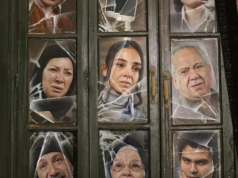Ramadan is a month of heightened spirituality. We control the physical needs to achieve a higher humanity and a sense of spirituality. Thoughts of the spiritual world naturally bring us to its inhabitants; thus the holy month is a good time to recount the story of the angels. What are angels? What is their purpose? How were they presented in art and how do they stand in the collective imagination?
Angels in History, Philosophy and Religion
History delves beyond the faith and tries to trace the origin of ‘angels’, hence it tells us that the idea of angels or ethereal beings is borrowed from the multiple gods in polytheistic religions. There is a particular emphasis on the influence of Zoroastrianism, an ancient religion to which the Jews were exposed during their Babylonian captivity. Judaism was a strictly monotheistic religion and hence, developed the concept of angels to replace the Zoroastrian gods – and influenced Abrahamic religions that followed, namely, Christianity and Islam. That is the view of history, how about philosophy?
Plato and Aristotle recognized the presence of creatures of higher intelligence with no bodies. And that these incorporeal intelligences affect the planets and stars. Aristotelian ideas were transmitted to the West through the works of Islamic scholars. As a result, Abrahamic philosophers incorporated the classical ideas and refined them. These ‘intelligences’ became angels, an intermediate between “the Prime Cause” and “existing things.”
In the Abrahamic tradition, the role of angels was predominantly to deliver divine messages. Like the story of Abraham and the sacrifice, Moses and the burning bush and Prophet Mohamed and the angel ‘Jibril’. But besides the prophets, angels provide comfort to believers. The human life is much defined by its cycle, and many believe that angels are present at the crucial points of birth and death, and during tough times to help and guide us. In Islam particularly, they are believed to be record keepers present with every new life.
Art Expressions of Angels
The Judeo-Christian religious texts are fraught with stories of angels. The three angels who visited Abraham, the angel that announced to Mary her pregnancy, and more. All these biblical stories have found expression in artistic forms and have adorned the walls of churches and religious manuscripts.
The Quran also mentions the angels often and specifically names two, Jibril and Mikhail. However, Islam and Judaism’s restriction in depicting holy people and angels, limited the material with visual representation of angels. A handful of medieval Persian and Ottoman manuscripts embellished with angles, and 17th century Jewish amulets with angels are largely what we have of angelic artistic representation for those two religions. Much of the artistic forms common to us today of angels sprang from the Christian tradition.
Wings, Halos and Harps
One of the earliest descriptions of wings comes from the Hebrew Scriptures, where there is instruction on how to carve cherubim with wings. Biblical accounts of the temple of Solomon also describe two giant cherubim. The cherub was thought of as some guarding figure like the griffin or sphinx in ancient cultures. Some early cherubim combine human and animal features (eagle or lion) that was always winged. Only later, in the Christian tradition, the cherub acquired the features of the Greco-Roman god Cupid and came to be shown as the “plump winged boy” we are used to today.
The earliest representation of Christian angels dates from the 3rd century and appears as carvings mainly on sarcophagi. The angels at this time appear as young men without halos and wings. But art is ever evolving, hence by the 4th century wings start to appear on angels. Some think this was borrowed mainly from depictions of the pagan gods Nike and Eros. But giving angels wings found resonance also in biblical texts, and hence became widely accepted. In Isaiah, there is description of the six winged seraphim (6:2).The Quran also reasserts this view “Praise be to Allah Who made the angel messenger with wings” (35:1). As a result, angels took the form of winged creatures in the collective imagination of believers.
As for halos, they were used to adorn the gods and often the emperors in ancient cultures. In early Christian art, only Jesus was depicted with a halo to emphasize his divinity – then at a later stage, they were applied to the angels to draw a link between them and Jesus. The common depiction of an angel with wings and a halo took off in the 5th century and to our day. Harps were another artistic addition to the image of angels that has been borrowed from ancient cultures. However, the association between angels and musical instruments is not far from the religious texts. In both the New Testament (Revelation 8:2) and the Quran (39:68), we are told that angels blow a trumpet to announce the end of the world. But again, since Islam restricts the depiction of angels, it is the Christian tradition that provides us with the marvels of artistic expression. By the 12th century onwards, angels are shown playing a variety of musical instruments like lutes, flutes, viols, horns and mandoras.
Angels in the Collective Imagination
While on earth, humans dream of ways to reach the heavens – and the presence of angels is assurance that part of heaven is here on earth. Although the Quran and the Christian tradition tell us that angels were made of light while the Hebrew Scriptures describe them as creatures of fire, over the centuries we have presented them with more and more human features and enforced their proximity to our lives through art, film and folktales.



















